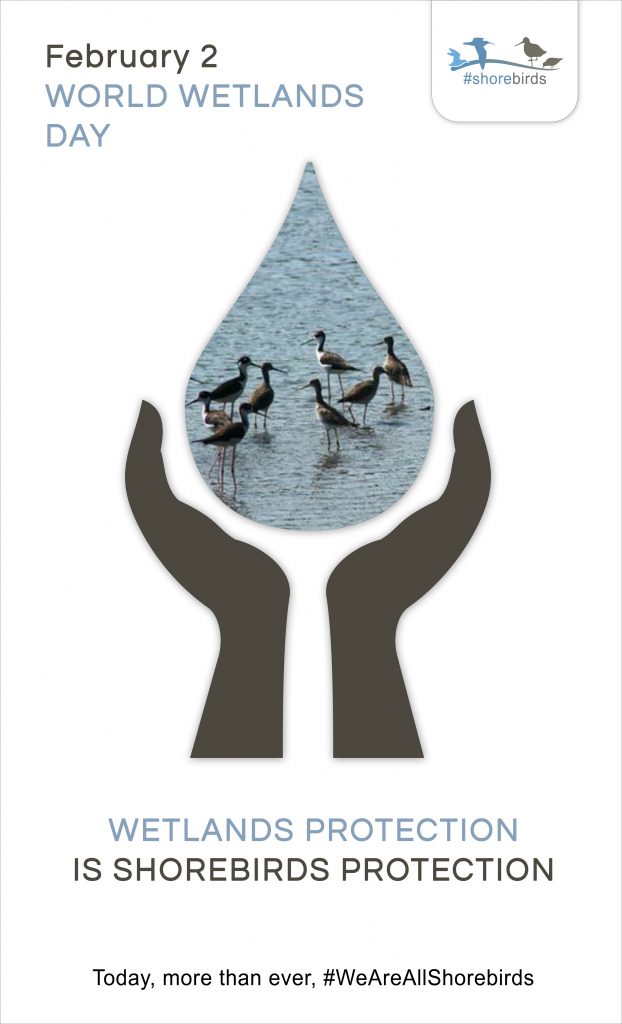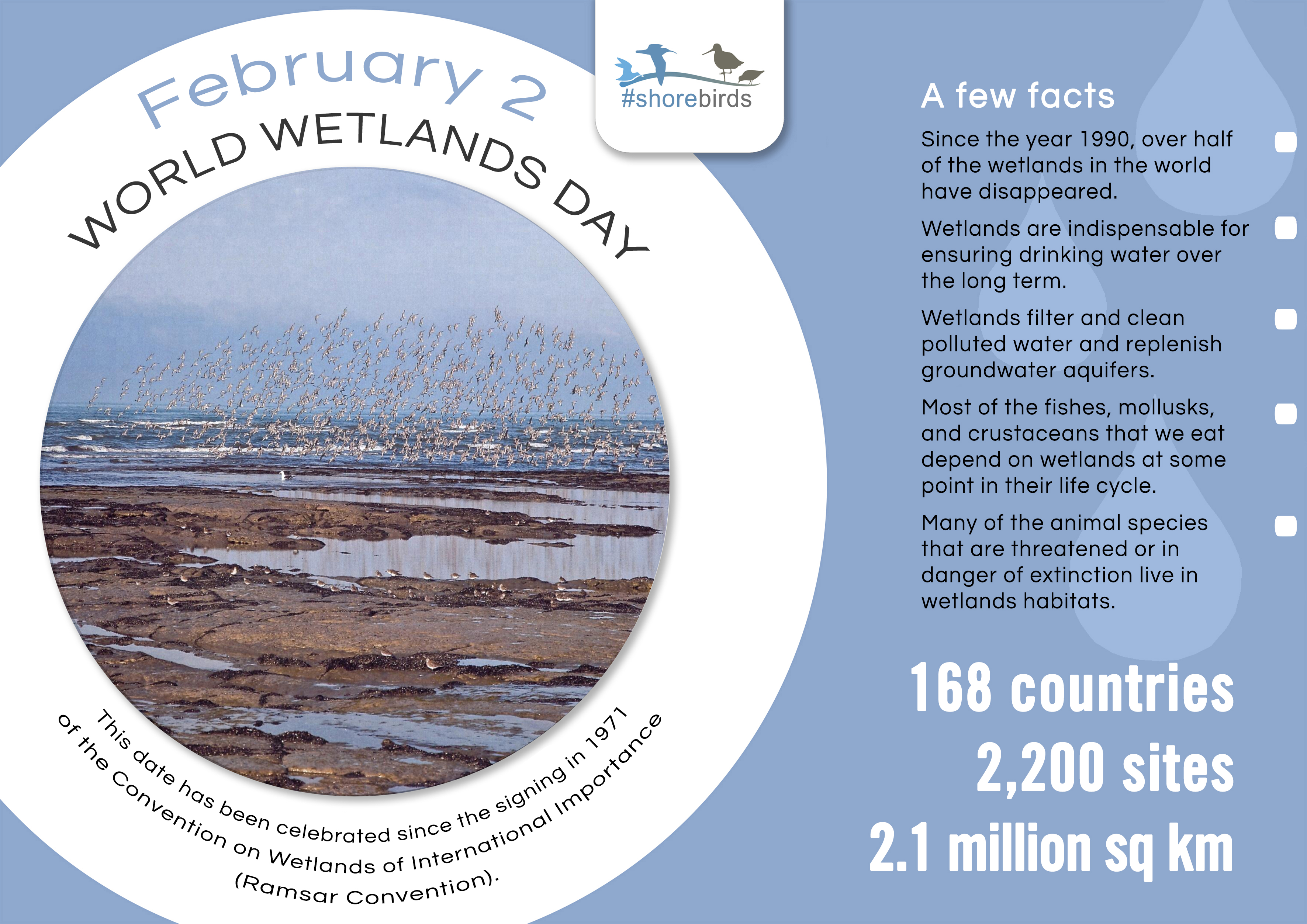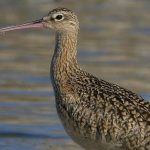
Friday, February 2nd is World Wetlands Day, a chance for WHSRN sites and partners to help raise global awareness about the value of wetlands for humanity, for the planet, and of course, for shorebirds.
This worldwide celebration marks the date the Convention on Wetlands (the “Ramsar Convention”) was adopted in 1971, signed in the Iranian town of Ramsar. Ramsar sites often overlap with WHSRN sites, reinforcing the recognition of these wetlands as irreplaceable ecosystems. This year, the theme for World Wetlands Day is “Wetlands for a Sustainable Urban Future.” About half the people on the planet currently live in cities, a number that is predicted to rise to 66% by 2050. But as cities are rapidly growing, wetlands are disappearing. More than 64% of the world’s wetlands have been lost since 1900. Thoughtfully managed urban wetlands have the power to make cities more livable. They act as giant sponges to reduce flooding; filter harmful toxins out of our water supply; provide a clean source of drinking water, food (fish) and medicinal plants; cool the air and radiate moisture to improve air quality. Saltmarshes and mangroves serve as buffers against storm surges. Urban wetlands provide respite for city-dwellers and refuge for wildlife. Needless to say, in a concrete jungle, an urban wetland can provide crucial habitat for shorebirds.
Click below to visit the profiles of some of the urban wetlands in the WHSRN network:
- Parte Alta de la Bahía de Panamá, Panama
- San Francisco Bay, California, USA
- Bahía de Asunción, Paraguay
- South San Diego Bay, California, USA
- Lago Texcoco, Mexico
- Fraser River Estuary, Canada
- Desembocadura del Río Maipo, Chile
- Great Salt Lake, Utah, USA
- Bahía de Todos Santos, Mexico
- Ensenada de la Paz, Mexico
- Bahía de San Antonio, Argentina
- Río Gallegos, Argentina
- Reserva Natural de Paracas, Peru

Is your WHSRN site in, near, or around a city? Do you have an event planned to celebrate World Wetlands Day this year? We encourage you to add your event to the World Wetlands Day map (http://www.worldwetlandsday.org/map), and explore what other events might be happening in your area.
Urban wetlands make cities more livable for humans and for shorebirds. Wetlands protection is shorebird protection, and now more than ever, #weareallshorebirds.






